Recommended to save! A guide to avoid the top ten mistakes of not having a main light
In today's decoration industry, it is a very popular practice to have no main lights! And the design effect of no main lights is also very simple and durable, so more and more people are starting to use no main lights! However, the ten major misunderstandings of no main lights are really high! It is recommended to collect this guide to avoid pitfalls, with solutions attached, and use it directly in decoration!
Entrance

The misunderstanding of no main light in the entrance hall: the pitfall rate is as high as 70%
Misconception 1: The light is placed in the middle of the door (the pitfall rate is over 90%). If the light is placed with the door as the center, people will feel that the light above their heads is too strong when they enter the door, and there will be shadows when they take off their clothes and change their shoes.
Myth 2: The wattage is too high and the brightness is too bright. When you come home late at night, it is too bright and dazzles your eyes, causing dizziness.
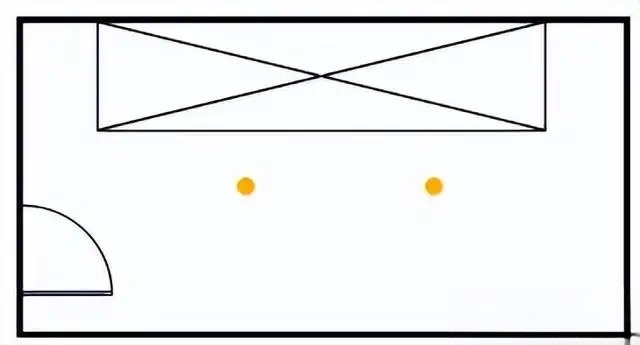
Passageway entrance solution

In a passage-style entrance, there will be a shoe cabinet and a shoe-changing bench after entering the door. At this time, the lighting method is not centered on the door, but on the cabinet. As a transition area between the outdoor and indoor, the entrance can generally be illuminated with one or two spotlights and induction light strips. If the lighting is arranged with the door as the center, people will feel that the light above their heads is too strong when entering the door, and it is easy to have shadows when taking off clothes and changing shoes.
Independent entrance solution

An independent entrance usually has a painting, a half-wall shoe cabinet, a sculpture, or a floor-to-ceiling cabinet hung opposite the door. At this time, the light should be focused where it needs to be, rather than in the center of the entrance or near the door.
living room

Living room has no main light misunderstanding: the pitfall rate is as high as 90%
Misunderstanding 1: Too many lights in the middle area. The traditional downlight layout method is not suitable for spotlight layout. (The pitfall rate is 80%)
Misconception 2: Put a row of spotlights on the sofa background wall. The sofa is an area where people stay for a long time. No matter how good the anti-glare spotlights are, there will still be glare below. It is not advisable to have spotlights directly above the sofa. (The pitfall rate is as high as 90%)

Living room center (coffee table) solution

If the whole living room has a suspended ceiling, you can place two spotlights side by side in the coffee table area with a distance of 10~40cm. At this time, be careful not to place the light in the center of the coffee table, but place it 10-40cm away from the TV background wall. This will prevent the coffee table from being exposed when taking pictures, and it will be more comfortable to turn on these two lights when sitting on the sofa. If there is a suspended ceiling or no suspended ceiling, you can choose to use open installation or not put a light in the middle.

TV background wall solution

The most common lighting method is to first determine the two lamp positions, and then divide them equally, usually 3-5 spotlights. Some people may mind the direct light of the spotlights on the TV screen, but this method also has its advantages, that is, the light spot is more uniform and not easy to be out of place. The newly developed golden ratio lighting method for TV background walls is suitable for 4m-6m TV back walls. Fine adjustments are required for those below 4m, and more than 6m need to be added.
To put it simply, place four lights at 1/5, 1/3, 2/3, and 4/5 of the length of the TV background wall. For example, if the TV background is 5m long, place four lights at 1m, 1.67m, 3.33m, and 4m.
Dining room

The misunderstanding of restaurants without main lights: the pitfall rate is as high as 90%
Misconception 1 : One big light illuminates the entire restaurant, the restaurant is bright but the table is dark (70% of the time)
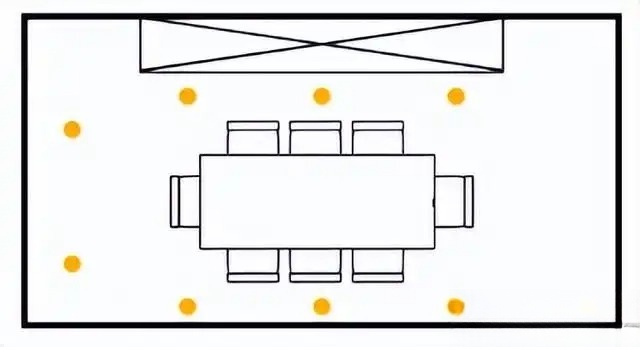
Restaurant Solutions

The dining table area is the only area where it is recommended to install a main light. It is generally recommended to purchase a chandelier with a certain shading angle or that can focus light. On the one hand, the dining table can be combined with a chandelier to increase its value. On the other hand, the food will smell much better when it is photographed with a focused light source.
The height of the chandelier is about 65cm from the table. If the height of the table is not determined, the lowest point of the chandelier can be 130-160cm (don't be afraid of hitting your head, just put the table on it). Considering the appetite, it is best to choose a yellowish light, 2700K-3000K. This light will make the food more colorful.
corridor

The misunderstanding of no main lights in the corridor: the pitfall rate is as high as 70%
Misunderstanding 1: The last light at the end of the corridor is aligned with the center of the last door. This is the most traditional way of laying out downlights. At this time, the last light is usually about 50cm away from the wall. This distance is fatal for embedded spotlights. Generally, there are some decorations at the end of the corridor, and a spotlight is needed to illuminate them. If the distance is too far, the function of key lighting cannot be achieved, and the decorative picture value at the end of the corridor cannot be reflected.
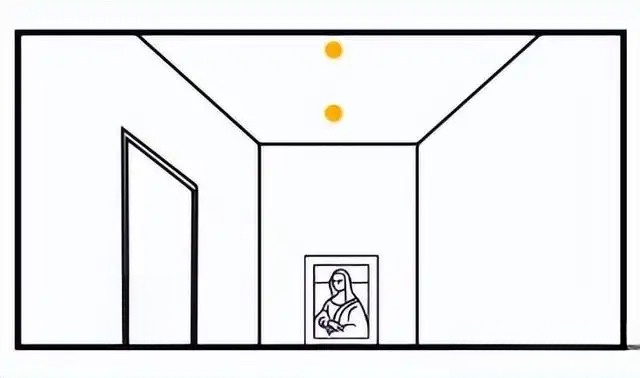
Corridor Solutions

The corridor lighting is very simple. Generally, there will be some decorations at the end of the corridor, and a spotlight is needed to illuminate it. At the entrance of the corridor, you can center a door or a wall, determine the location of a lamp, and then determine the length and number of spotlights according to the actual situation and then divide them evenly.
bedroom

The design misunderstanding of no main light in the bedroom: the pitfall rate is high and fatal
Misconception 1: Placing spotlights above the pillows. I believe I am not the only one who has been blinded by the spotlights above the pillows when I went to a hotel. Of course, many people also do this at home. (The pitfall rate is high and fatal!!)
Misconception 2: For the sake of simplicity, only one ceiling light is installed, which seriously affects the sleep of others when reading or getting up at night! !
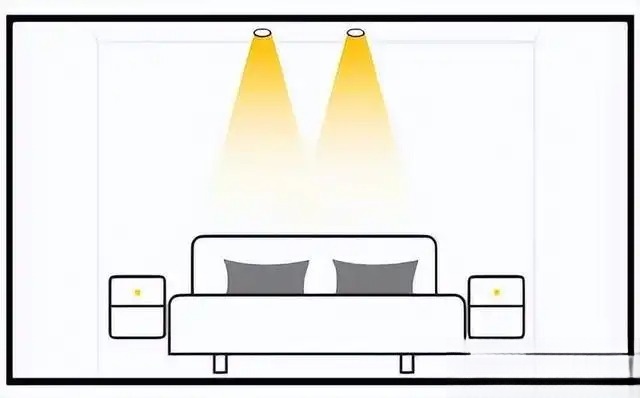
Bedroom Solutions

Introduce ambient light. If there is a suspended ceiling, make a light trough in the suspended ceiling and install light strips to create ambient light. If there is a bedside backboard, make a groove on the top of the backboard and install linear lights to wash the wall for ambient light. If there is no suspended ceiling and no bedside backboard, use the upward light return groove on the wall to wash the wall for ambient light. You can also install a small chandelier for ambient light. The spotlights in the middle and lower part of the bed should be dimmed 30cm from the end of the bed, with a spacing of 20-30cm, so that it is not dazzling when lying down. The spotlights on both sides of the bed should be centered on the top of the bedside table, or leave a hole of no less than 50cm away from the wall to avoid breaking the light arc. The bedside spotlights can also be replaced with small chandeliers.
kitchen

The kitchen has no main light misunderstanding: the pitfall rate is as high as 80%
Misconception 1: Put the light in the middle of the kitchen, and the light will be blocked by the big head when cooking, cutting and washing vegetables. (The pitfall rate is 80%)
Misconception 2: Using flat panel lights for kitchen integrated ceilings. (The pitfall rate is 80%)
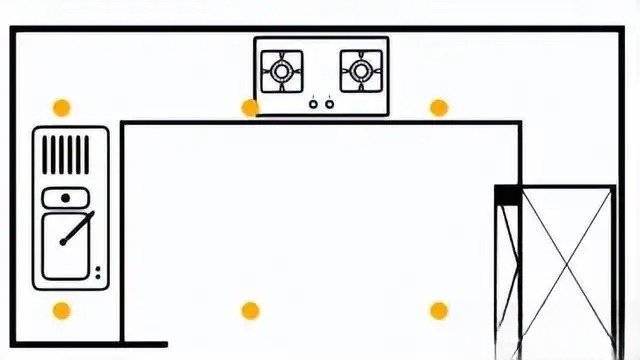
Kitchen Solutions

When arranging the lighting positions in the kitchen, you must take into account the high cabinets (60cm), refrigerator (70cm), hanging cabinets (40cm), and only countertops (0cm). Generally, the lighting positions must be planned in advance. Where there are high cabinets, the wall should be 80-85cm high, where there is a refrigerator, it should be 90-95cm away from the wall, where there are hanging cabinets, it should be 55-60cm away from the wall, and where there is only countertops, it should be 30cm away from the wall.
bathroom

The misunderstanding of no main light in the bathroom: 50% of the people fall into the trap
Misconception 1: One main light can solve the lighting problem (the adoption rate is 50%) Do you know what pale means? You will know it when a 6000K main light illuminates your toilet.
Misconception 2: Use flat panel lights in bathroom integrated ceilings (80% penetration rate)
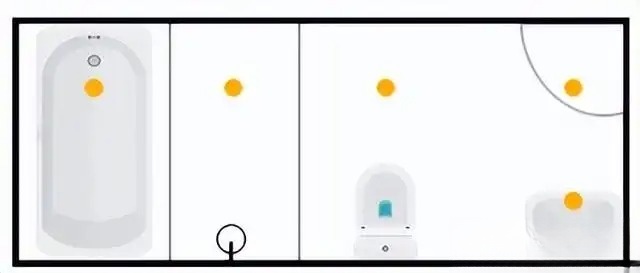
Bathroom cabinet wash basin solutions

There are two types of bathrooms. One is to use a mirror cabinet. The other is a thin mirror. The first light is placed in the middle of the wash basin. For a pure mirror, it is generally 25-30cm away from the wall, and for a mirror cabinet (generally within 20cm), it is 40-45cm away from the wall. In this way, the light on the face is sufficient, and a spotlight is added at the back. In this way, the person in front of the mirror will be three-dimensional with less shadows. At the same time, you can choose a mirror with light. It is better to have light on both sides of the mirror, so that the person in front of the mirror has light on both sides, which can ensure that the light is directly on the face, making the face more three-dimensional.
Toilet solutions

There are two ways to place lights in the toilet area. One is to place it above the toilet, about the position of the knee when squatting. In this case, you should use a bull's eye light, which is what you said before, the feeling of shitting in the center of the stage. The more common method is to place a spotlight opposite the toilet.
Bathroom entrance solutions

For a straight shower room from Dutong, you only need one spotlight, which is on the wall opposite the shower head. It is generally not recommended to place it above the shower head, because when you wash your face, you will feel like the sun is shining brightly, and you need more relaxing lighting when you take a shower. If it is a diamond-shaped shower room, this type of bathroom is generally small. The lighting outside is light enough, and it is not recommended to place a light in the shower room.